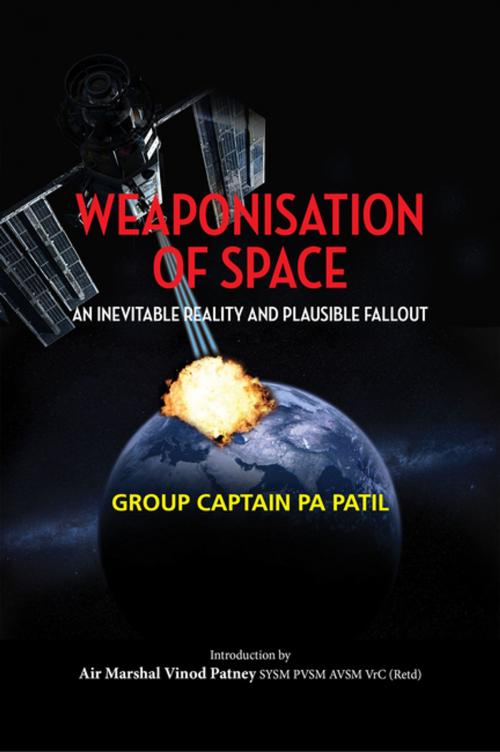Weaponisation of Space: An Inevitable Reality and Plausible Fallout
An Inevitable Reality and Plausible Fallout
Nonfiction, Reference & Language, Law, Air & Space, Science & Nature, Science, Physics, Astrophysics & Space Science| Author: | Group Captain PA Patil | ISBN: | 9789386288431 |
| Publisher: | KW Publishers | Publication: | January 15, 2017 |
| Imprint: | KW Publishers | Language: | English |
| Author: | Group Captain PA Patil |
| ISBN: | 9789386288431 |
| Publisher: | KW Publishers |
| Publication: | January 15, 2017 |
| Imprint: | KW Publishers |
| Language: | English |
Militarily, use of spacebased assets, when integrated with operations, assumes importance as one of the many force multipliers. As on date, outer space is being extensively used by the armed forces for varied services which include navigation, intelligence, surveillance, reconnaissance, environmental monitoring and advance warning. The command and control in today’s netcentric environment also depends on space resources. Thus, the use of outer space with spacebased assets in support of military operations leads to the deduction that space as a medium stands militarised. Of late, many of the dominant nations have developed, or are expanding, capabilities to attack the spacebased assets of potential adversaries to disrupt command and control structures. Countries like the US and China are contesting for space supremacy and working towards developing spacebased weapons capable of being delivered from spacebased platforms. These developments, in turn, are infusing a sense of insecurity amongst other international players, including India, and have raised concerns worldwide. Development of spacebased weapons by any state has the potential to ignite a new arms race in space as many countries now possess the wherewithal for launching spacebased assets capable of carrying the required payloads. Thus, from the present capability of ‘militarisation of space’, we seem to be graduating towards ‘weaponisation of space’. As outer space has been designated as one of the ‘global’ commons, any sort of deployment or employment of space weapons raises concerns and any use of spacebased weapons will have unpleasant cascading effects. In the absence of any international curb or law on space weaponisation, it continues to be a conceptual possibility as well as an empirical reality.
Militarily, use of spacebased assets, when integrated with operations, assumes importance as one of the many force multipliers. As on date, outer space is being extensively used by the armed forces for varied services which include navigation, intelligence, surveillance, reconnaissance, environmental monitoring and advance warning. The command and control in today’s netcentric environment also depends on space resources. Thus, the use of outer space with spacebased assets in support of military operations leads to the deduction that space as a medium stands militarised. Of late, many of the dominant nations have developed, or are expanding, capabilities to attack the spacebased assets of potential adversaries to disrupt command and control structures. Countries like the US and China are contesting for space supremacy and working towards developing spacebased weapons capable of being delivered from spacebased platforms. These developments, in turn, are infusing a sense of insecurity amongst other international players, including India, and have raised concerns worldwide. Development of spacebased weapons by any state has the potential to ignite a new arms race in space as many countries now possess the wherewithal for launching spacebased assets capable of carrying the required payloads. Thus, from the present capability of ‘militarisation of space’, we seem to be graduating towards ‘weaponisation of space’. As outer space has been designated as one of the ‘global’ commons, any sort of deployment or employment of space weapons raises concerns and any use of spacebased weapons will have unpleasant cascading effects. In the absence of any international curb or law on space weaponisation, it continues to be a conceptual possibility as well as an empirical reality.















